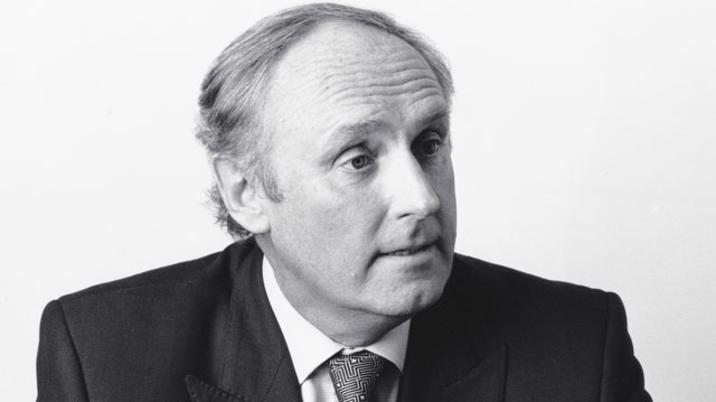
May saw the long-awaited renaming of Time Inc UK, following its purchase by private equity firm Epiris. What would they come up with? Something bold, thrusting and thoroughly forward looking? Cue a roll of drums – the new name was, err… TI Media.
Reducing the name to its initials and adding the word ‘Media’ left me slightly underwhelmed, although I’ve since learned that the ‘I’ represents ‘IPC Media’ one of the company’s former incarnations and not ‘Inc’, so perhaps it’s a little bit more interesting than it first appears.
It was followed a few weeks later by the unveiling of a new logo. To the untrained eye, it’s the words ‘TI Media’, with the ‘TI’ italicised on a pinkish background. But, clearly, a lot more thought went into it than that. Simon Clement, head of brand and pitch design, explains: “We talked a lot about how we spark conversations by arming people with stories and expertise. That’s what this logo signifies with its speech bubble device. The two fonts are specifically chosen to complement each other. The serif font used for the ‘T’ and ‘I’ refer to our heritage. The sans-serif font used for ‘Media’ represents modernity and our new direction.”
As a name, ‘TI Media’ doesn’t yet trip off the tongue, in the way that ‘Bauer’, ‘Hearst’ and ‘Condé’ do, but no doubt that will change with time, no pun intended.
Sticking with Time Inc, as they were at the time, it was sad to see the closure of Look magazine in May. Despite a major relaunch in September 2016, sales continued to decline. The ABCs tell the brutal story: ten years ago, the title sold 305,603, but its latest ABC stood at 57,110, and I’m guessing the trajectory suggested further decline.
The 2016 relaunch looked to reorganise the content, bring on board key influencers and increase distribution via third party platforms. Absent from the relaunch press-release was any mention of e-commerce, which with the benefit of hindsight, might have been a mistake.
Media commentator Colin Morrison tweeted: “Time Inc UK closes once high-flying Look magazine. From 300k to 40k circulation in 10 years. Why was this ultimate shopping magazine not Time Inc's vehicle for e-commerce - years ago?”
Changing hands
It’s been slightly less frenetic on the M&A front of late, but three acquisitions came to our attention. Incisive Media acquired Open Door Media, which had itself been formed as the result of an MBO from Incisive five years ago. So, it’s a welcome home for Nick Rapley and his team. Iliffe, a growing presence in regional media, looks set to acquire the Newark Advertiser and Kelsey Media turned out to be the final resting place for Stuff, after Haymarket’s earlier proposed sale of the title to Future had been blocked on competition grounds.
Left-field award
This period’s left-field award must go to Dennis Publishing’s Cyclist magazine for launching the first in a new line of… premium coffees.
According to Dennis, the single origin Colombian coffee delivers, the perfect pre-ride espresso; “The resulting arabica coffee is wonderfully bright and fruity to taste, with notes of toffee apple and blackcurrant, finishing with subtle hints of dark chocolate.”
Coffee was not something I’d ever particularly associated with professional cycling, unlike slightly invasive saddles, syringes and asthma inhalers, but says Dharmesh Mistry, publishing director of Cyclist: “Road cycling and coffee have been entwined since the 1960s … Creating our own coffee has been an enlightening experience and culturally feels like a natural extension of the brand.”
In case you’re interested, Cyclist coffee comes as either Whole Bean, Cafetiere Course Grind, or Espresso Fine Grind, and is available in individual bags or as a subscription. Enjoy.
Bigger than Twitter (in the UK)
One title that has recently been shouting its online success from the rooftops is The Sun. Since taking down its paywall, traffic has – not surprisingly – grown, a lot. In May, according to comScore, The Sun Online took top slot for the second month running in the UK, beating MailOnline into second place.
According to News UK, TheSun.co.uk saw 31.7 million unique visitors in May, a month that featured a Royal Wedding as well as Love Island (God help us) and the World Cup build-up. Furthermore, said the proud publishers, The Sun Online is also now bigger than Twitter in the UK, which recorded 29.6 million unique visitors in May.
It’s been a good period for other News UK titles too. In July, the company announced a major subscription milestone, with The Times and The Sunday Times reaching 500,000 subscribers at the end of June 2018. Digital subscribers have overtaken print subscribers for the first time, with digital-only subscriptions up 20 per cent year-on-year to 255,000, in what the publishers describe as the most successful year since the digital subscription model was launched in 2010.
Martin Ivens, editor of The Sunday Times, said: “In the age of information overload, the role of exclusive, investigative reporting, expert columnists and cultural commentary is more important than ever.”
As has been mentioned elsewhere in this issue, more than once, the trend towards increased reader revenues is gathering pace and it’s heartening to see.
Changing the guard
June saw the announcement that long time editor and prominent leaver Paul Dacre was to retire as editor of the Daily Mail in November, to be replaced by Mail on Sunday editor, the remainer Geordie Greig.
In a deeply divided country, Paul Dacre remains a polarising figure.
DMGT chairman Lord Rothermere, of course, had good things to say, describing him as “the greatest Fleet Street editor of his generation” and praising his “many campaigns, investigations and crusades that have held power to account, given a voice to the voiceless and often set the political agenda through six prime ministerships”.
Some of those to the left of the Mail were less charitable. To The Guardian’s Polly Toynbee, he was the “poisoner-in-chief”, whilst for Alastair Campbell: “he and his paper are the worst of British values posing as the best”.
But let’s leave the last word to former Daily Telegraph editor, Charles Moore, who wrote in The Spectator: “the following are good and true points to be made about Paul. 1) He fully, properly edits, and his proprietor has the sense to let him do so. 2) He values good writers, and pays them accordingly. 3) He is brave, especially in not minding the disapproval of polite society.”
A lot has already been written about the potential for a political shift in the Mail with the changing of the guard. Remainers would no doubt like that to be the case, but I can’t see DMGT playing footloose and fancy-free with what remains a highly successful commercial model.
The Ozone project
Meanwhile this period saw further evidence that major newsbrands have finally worked out who the real enemy is (spoiler alert: not each other) and are beginning to collaborate so as to give extra scale and heft to their online commercial offering. The recently announced Ozone Project is a joint venture between Guardian News & Media, News UK and The Telegraph, due to launch this autumn. The combined audience platform will offer advertisers and agencies “direct and transparent access to an audience of more than 39.4m million unique users in brand safe, fraud free, premium environments across the UK’s most trusted publishers”. Given the prevailing anarchy on much of the web, those are powerful USPs, which I imagine will prove attractive to advertisers.
Celebrating diversity
Given the culture wars raging in so many parts of the world – not least on the other side of the Atlantic – it has been interesting to see some mainstream media in the UK displaying their inclusivity credentials so prominently.
ShortList published its first ever LGBTQ+ themed issue to celebrate the Pride events in London. The cover featured two men locked in a passionate kiss. Chris Mandle, entertainment director, ShortList, said: “This was a huge opportunity for us to engage with our readers about a subject that means a lot to us. We produced an issue which is Pride-themed all the way through, full of advice and insight from the LGBTQ+ community.”
Cosmopolitan has partnered with Instagram on a project aimed at changing the conversation around LGBTQ+ issues. To kick off the campaign, Cosmopolitan.com/UK created a new video, #AskMeThisNotThis, in collaboration with influential LGBTQ+ figures. The video explores the “outdated and often offensive questions the LGBTQ+ community is sick of being asked”.
As part of the project, Cosmopolitan.com/UK is creating a new permanent space dedicated to the stories of “self-identifying women and non-binary people that goes beyond the heterosexual”.
Not to be outdone, DC Thomson Media’s Scottish Wedding Directory released a cover shoot featuring two brides and two grooms for a split-run cover on its summer issue.
Christopher Phin, head of Scottish Wedding Directory, said, “The most important thing for me personally is that this split-run cover wasn’t conceived as a stunt or a gimmick. I love that this isn’t ‘the gay issue’, or that we’ve covered same-sex weddings only in this one issue. Call it naivety, but I’m hopeful the world might just be starting to realise that the only thing special and worth celebrating about an LGBTQ+ wedding is the love the couple have for each other.”
We’ll know that that the world has truly changed when initiatives like the above are no longer considered noteworthy. We’re not there yet.
I’m reminded of the great answer TV presenter Sue Perkins once gave when asked about her sexuality: “being a lesbian is only about the 47th most interesting thing about me”.












